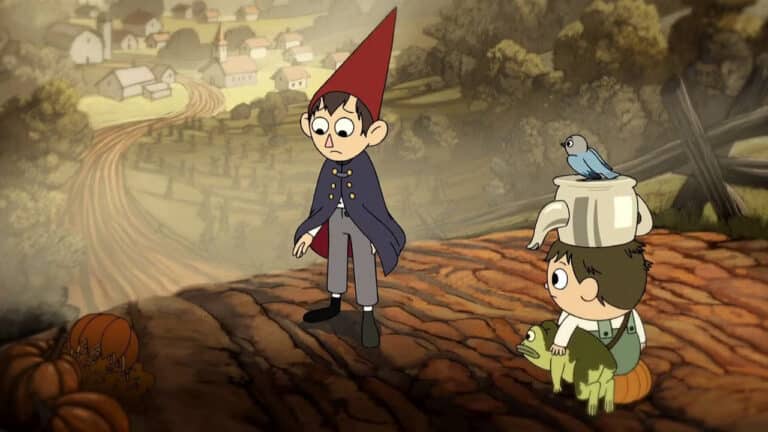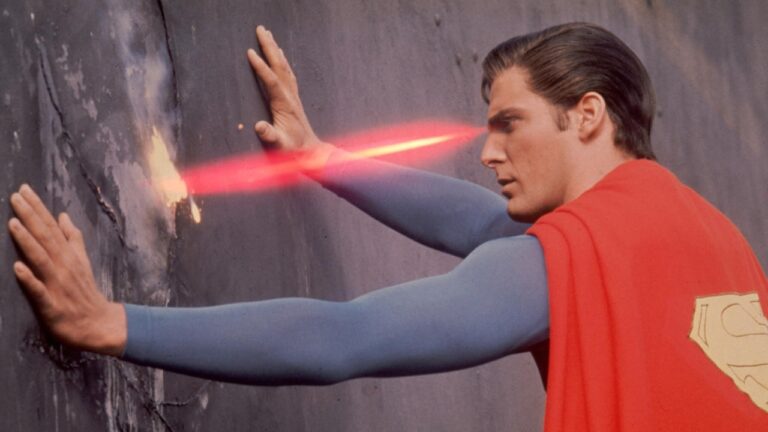13 Totally Awesome Things That Only Gen X Understands

Generation X is the forgotten generation sandwiched between two much larger groups that get a a lot more attention: baby boomers and millennials. We so-called “latchkey kids” and alleged “slackers” are the last generation to grow up without the Internet, came of age during the MTV era, and navigated an increasingly materialistic world that loomed with the threat of nuclear war.
Born between 1965 and 1980, Gen X grew up as the gritty 1970s gave way to music videos, Reaganomics, blockbuster movies, and the golden age of arcade games during the 1980s. After getting up on Saturday morning and watching Land of the Lost, we might play our Atari 2600 and then head to the mall to meet up with friends at the arcade or mall cinema. Before we went out, we dutifully programmed the VCR for our perplexed boomer parents so we could all watch the Star Wars Holiday Special on TV later.
Gen X navigated all of this without cell phones, social media, or the Internet. When thinking about things that are uniquely Gen X, the ones that come to mind are experiences that felt very of the moment and of the time — we weren’t preoccupied with our social media “brand” or number of followers and likes. Here are a few of those awesome moments that will be “lost in time like tears in rain,” just like a character in Blade Runner once said.
E.T. the Extra-Terrestrial Atari 2600 Video Game

1982’s E.T. the Extra-Terrestrial became the highest-grossing movie in history at that time, so it made sense that Atari rushed to get a video game home in time for Christmas for the most popular home video game system of the early 1980s: the Atari 2600. What could go wrong?
Many Gen Xers — including this one — remember opening up the game cartridge on Christmas morning, putting it into our Atari 2600, and immediately becoming frustrated with the blocky graphics and clunky gameplay that resulted in E.T. falling into a pit over and over… and over. We loved that our parents scored the cartridge, but to say that the video game didn’t come close to capturing the magic of Steven Spielberg’s blockbuster is the understatement of the decade.
Many years later, a documentary team discovered where most copies of E.T. the Extra-Terrestrial video game ended up: buried in the desert in New Mexico. For the record, I still have mine, and it still is irritatingly difficult to play.
Schoolhouse Rock!

Schoolhouse Rock! is a series of musical educational short films that originally aired between 1973 to 1985 on Saturday mornings. The catchy jingles such as “I’m Just a Bill” and “Conjunction Junction” taught young Gen Xers about grammar, science, history, and politics.
I still have the planets of the solar system — as well as their order from the Sun — committed to memory thanks to Interplanet Janet, the “Galaxy Girl.” Although it’s no longer “quite interesting” that a “noun is a person, place, or thing,” it sure was as a child learning to communicate. I still feel kind of sad for that anthropomorphic bill sitting on Capitol Hill waiting to become a law, too.
Making a Mixtape

Younger generations don’t quite understand the time and dedication that went into making a mixtape for someone else. If someone made you one of these curated audiocassettes, they must have thought you were rad to the max.
For those unfamiliar with audiocassettes, most were limited to 45 minutes on each side. When making a mixtape, you had to make sure that you paused your recording of a song at the exact time it ended. What’s more, you had to try to fit as much music as possible on one side without running out of tape. If you misjudged and the song didn’t fit, you had to rewind, pick a shorter song, and record again until you found one that fit.
Sid and Marty Krofft Shows

Every true Gen Xer remembers watching at least one Sid and Marty Krofft show on Saturday morning. The brothers created numerous imaginative, surreal, and highly entertaining live-action shows such as H.R. Pufnstuf, Land of the Lost, and Sigmund and the Sea Monsters.
When watched as an adult, shows like Land of the Lost beg the question: what were these people on when making these children’s shows? The cheap special effects (Claymation dinosaurs!) and demented stories from the beloved Krofft shows helped warp my perception of quality entertainment from an early age.
Columbia House

Columbia House was a mail-order music club created by Columbia Records in the 1970s. Here is how it worked: customers would join the music club by selecting a number of cassette tapes and, later, CDs and taping a penny to a mailed order form. Before long you would receive a number of “free” cassettes or CDs with the understanding that you would continue to order new music directly from Columbia House.
For those who think that Columbia House is an urban legend, I can attest that this marketing miracle was 100% legit. I might still have some of those mail-order CDs somewhere, but I can’t say that I ever ordered anything from Columbia House again after what that initial penny got me. For reasons that should be obvious, the owner of Columbia House filed for bankruptcy in 2015, but it was fun while it lasted!
Video Arcades

The late 1970s and early 1980s were the golden age of video arcades. Every mall had one, and Gen X kids sunk countless quarters into games such as Donkey Kong, Q*bert, Pac-Man, Galaga, Dig-Dug, and hundreds more.
As home video systems such as the Sony PlayStation became more technologically advanced, the need to go to a video arcade to play games decreased and the numbers or arcades declined. Today, barcades that combine bars and classic video games have popped up in many cities to attract nostalgic Gen Xers who remember playing at public arcades as kids.
MTV’s 120 Minutes

MTV has existed since 1981 and, at least for its first decade, the cable channel changed pop culture forever by playing music videos. Not only did “video kill the radio star,” as the Buggles sang in the first video MTV played, but the network flexed by introducing viewers to artists they might not have previously heard on top-40 radio stations.
MTV’s 120 Minutes originally aired once a week between 1986 and 2000. During those precious two hours, alternative music fans could catch videos by bands such as Siouxsie and the Banshees, Depeche Mode, the Cure, the Sisters of Mercy, New Order, and other artists that MTV wouldn’t air during the day. Gen Xers with a taste for alternative jams had to stay up late on Sunday night or set their VCR to record 120 Minutes, which brings us to…
Programming a VCR

Gen Xers remember how the VCR changed everything about how people consumed entertainment. Not only could you rent VHS tapes of movies from a local video store, you could program your VCR to record TV shows and movies to watch anytime later.
Programming a VCR — especially the earlier models with mechanical dials and switches — required a comfort with electronics that the parents of Gen Xers did not possess. Or maybe they just pretended they didn’t know so that their kids would program the VCR to record their favorite show? Either way, we latchkey kids rolled up our sleeves, read the VCR instruction manual, and programmed our machines like a boss. This right of passage made Gen Xers more tech-savvy than previous generations.
“Where’s the Beef?”

If you don’t remember the Wendy’s 1984 ad campaign “Where’s the Beef?,” then you are most assuredly not Gen X. The ads featured a senior named Clara Peller who looks at a comically large hamburger bun and a pitifully small burger patty and, confused, asks, “Where’s the beef?”
Not only did the ad campaign become a massive success for Wendy’s, subsequent commercials followed, the commercials spawned related T-shirts and other merchandise, and the phrase “Where’s the beef?” became a catchphrase that people still use to this day when questioning if something meets expectations.
Aggressively Styled Hair

Everything was bigger in the ’80s, especially hair — and not just on TV shows like Dynasty or in music videos.
The popularity of hair products such as Dep gel and Aqua Net led to giant perms, teased tumbleweeds of locks, and the mullet. Alternative and punk kids used the improved styling products to create hair-raising mohawks or tangled nests of tar-black hair à la Robert Smith or Siouxsie Sioux. For those into hip-hop, the hi-top fade towered above the rest.
Seeing the Original Star Wars Trilogy in the Theater

My earliest cinema memory is seeing the original Star Wars in a theater with my father in 1977. By the time 1980’s The Empire Strikes Back came out, my mother got recruited as my chaperone. When Return of the Jedi premiered in 1983, I was old enough to go with a friend and try to mentally process that Luke and Leia were siblings.
Lucasfilm rereleased all of those films as Special Editions decades later, but I remember when Greedo shot first, Sy Snootles was a rickety puppet, and there were no CGI characters. George Lucas may have tinkered with his sci-fi saga, but he can’t erase how Gen X first experienced Star Wars in theaters.
Friday Night at the Mall

It’s Friday night and you’re a young teen. If you were a Gen Xer living in the 1980s, you went to the mall to hang out with friends. Not only was there a food court (Orange Julius!) and theaters, but the video arcade kind of functioned as a nightclub for teens.
Season three of Stranger Things is set during the summer of 1985, and, true to the time period, most of the action takes place in the Starcourt Mall. Many movies watched by Gen Xers — Dawn of the Dead, Valley Girl, Fast Times at Ridgemont High, and Chopping Mall — all take place in shopping malls because that is where young people socialized.
An Expectation of Privacy

Gen X teens did not have social media, the Internet, or cell phones. When we wanted to meet a friend, we called them on a landline and set a time and a place — usually the mall — to connect. If we needed to check in with our parents at home, we used a quarter that should have gone into a Pac-Man machine and called them from a pay phone.
Although many today can’t imagine life without their cell phones and social media, imagine a time when someone couldn’t ping you anytime or anyplace. Gen X was the last generation to live in the moment and have some expectation of privacy because our entire existence wasn’t documented, photographed, posted, and voted upon on social media. Sure, we’re all on Facebook now, but our friend list is probably set to “private.”





